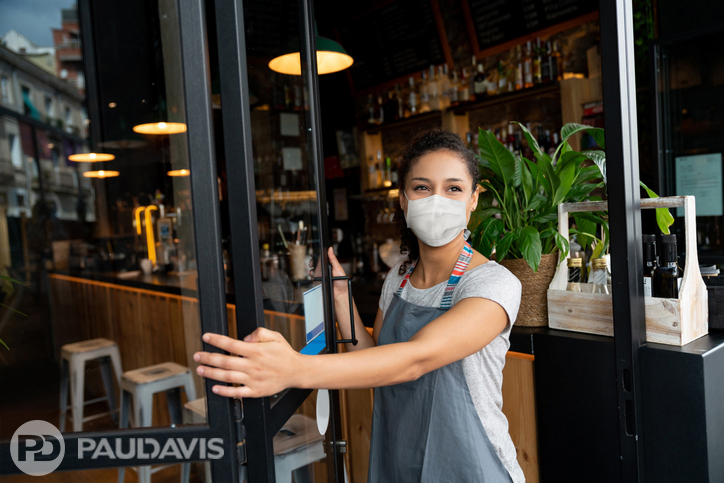
In a recent survey by the McKinsey & Company management consulting firm, a whopping 80 percent of respondents reported dramatically changed work lives due to COVID-19. Remote workers found the changes mostly to their liking, citing more engagement, control over work environments, better work quality and a stronger sense of wellbeing. As employees return to reopening offices and commercial buildings, companies are trying hard to maintain that new level of comfort, health and safety.
“Making occupants comfortable requires more than flipping on lights and turning up thermostats,” says Leslie Anderson, Vice President of Training and Launch of Paul Davis. “They have to feel confident that workplaces are safe and surroundings won’t harm their health. We recommend customers start planning at least eight weeks before employees return.”
Paul Davis, who assists commercial customers with planning and process implementation for reopening facilities, advises addressing the following areas:
Create a safety plan: Convene (preferably virtually) building management, maintenance staff, support contractors and tenant representatives to develop and share a comprehensive safety plan that identifies schedules, responsibilities and tasks before and after tenants arrive.
Inspect structures prior to occupancy: Perform a walk-through to identify and resolve hazards that may have emerged in closed buildings: mold growth, rodents, pests, stagnant water systems or disrepair. Test and inspect building systems to ensure they are ready for sustained operation - HVAC, water supply, plumbing fixtures, lighting, roofing, electrical systems, drainage, entrances and walkways. Use this walk-through to plan system modifications: some buildings boost air circulation for two hours before and two hours after max occupancy, for example; others are installing HEPA filters.
Develop hazard controls: Identify and then replace - or plan regular cleaning for - high-touch items and systems: entry kiosks, keycards, controls, door handles, restroom faucets and the like. Close high hazard areas like common kitchens, vending areas and water fountains. Modify layouts in workstations and common areas to maintain social distancing. Develop and post new traffic patterns and guidelines for areas like elevators and escalators that put workers in close proximity.
Maintain safe conditions: Maintaining safe work conditions requires specific cleaning tools, certified cleaning products, personal protective equipment and proper technique. Many government agencies have compiled lists of products that have tested as effective against COVID-19. Train maintenance staff to clean properly on schedule, with appropriate products and technique. Retain contracted help if required; Paul Davis helps many customers with cleaning services.
Change the way people work and interact: Most buildings are tailoring approaches to address their particular properties, activities and tenants. Some, for instance, conduct daily health checks prior to entry. Some schedule “pods” of workers – employees that always work the same shifts together. Others modify sick leave policies or offer incentives that decrease mass transit use with its risk of exposure. Whatever the specific “rules of engagement”, communicate frequently about what’s changed, how to follow procedures, why compliance is important, and whom to contact with questions or concerns (including compliance issues and potential COVID exposures).
“New vaccines provide a hopeful outlook that this awful pandemic will be behind us one day,” concludes Anderson. “Until then, we must maintain vigilance and take recommended precautions to safely utilize our commercial properties. Paul Davis is available to help.”
